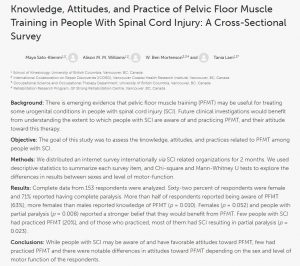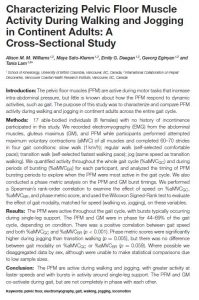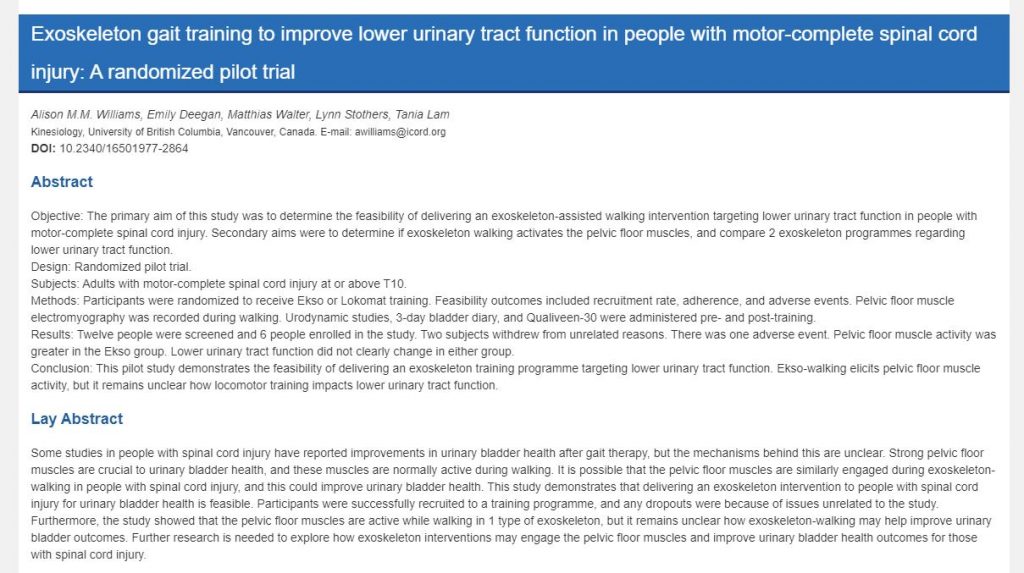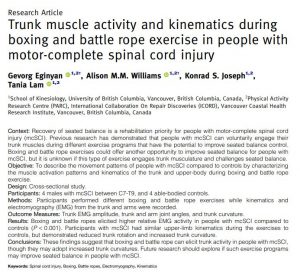Former undergraduate student and now lab staff member, Maya, recently published an article on the knowledge, attitudes, and practices related to pelvic floor muscle training among people with spinal cord injury. This survey included people with SCI from across North America and revealed that that while people with SCI are interested in this type of therapy, very few people have tried pelvic floor muscle training. Read the full article here!
Monthly Archives: November 2022
Exploring pelvic floor muscle activity during gait
Our recent publication explores how the pelvic floor muscles are active during walking and jogging in able-bodied men and women. This is the first paper to characterize pelvic floor muscle activity during the entire gait cycle and hints at how these muscles work during physical activity to prevent incontinence. Check out the full paper here.
 Special thanks to everyone who participated in this study!
Special thanks to everyone who participated in this study!
Gevorg Defends
Congratulations to our Master’s student, Gevorg, who successfully defended his thesis “The effect of transcutaneous tibial nerve stimulation on the corticomotor excitability of the abductor hallucis and pelvic floor muscles” in August 2021.
We wish Gevorg all the very best in his next academic chapter at UBC’s Masters of Physical Therapy program.
Gevorg’s thesis is available through UBC cIRcLe here.
Can we use exoskeleton-assisted walking to improve urogenital outcomes?
Check out our recent publication on the effects of exoskeleton-assisted walking to improve urogenital outcomes, such as urinary incontinence, for people with spinal cord injury. Preliminary data from this paper was first presented by Dr. Lam at the 2019 International Continence Society in Sweden, and we are excited to publish the final results! Read the full paper here.
New publication on seated boxing for spinal cord injury
Our Master’s student, Gevorg, and Lab Manager, Ali, published an article about the effects of seated boxing and battle rope exercises on trunk muscle activity for people with motor-complete spinal cord injury. This paper adds to the growing body of literature that people with high-thoracic and cervical motor-complete injuries have some degree of voluntary muscle activation in their abdominal and lower back muscles. Read the whole publication here.
This work was a part of Konrad’s undergraduate directed studies project. Way to go team!

